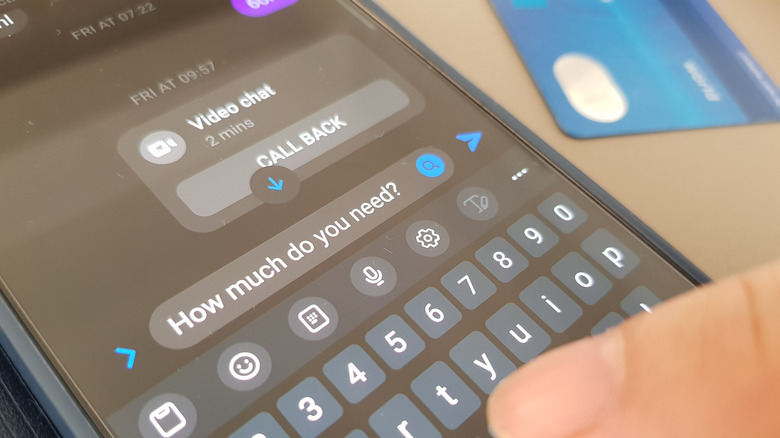Popular Text Message Scams Rake In Over $1 Billion For Cybercriminals
Every week, I receive a handful of text messages that are quite clearly scams. Some are about past-due toll road payments. Some mention a Coinbase withdrawal code. Others reference job offers for positions at companies I've never heard of. While these texts are undoubtedly a nuisance, the upside is that it's relatively easy to spot them. Some texts, for example, are from international area codes. Suffice it to say, a job offer over text from a number that starts with +63 — which is the country code for the Philippines — is easy to snuff out.
But with the advent of AI, the language used in scam texts is becoming more natural and believable. And when the texts reference something vague but familiar, like an issue regarding a purchased item from Amazon, discerning what's real and what's fake becomes a tad more challenging. Further, older adults who are less tech-savvy are generally more prone to believing a scam text in the first place. All told, these text scams are sometimes sophisticated and surprisingly lucrative, with The Wall Street Journal recently reporting that these scams have allowed cyber gangs to rake in over $1 billion in just a few short years.
Text scams are a numbers game
Because many people can identify a text scam at first glance, scammers need to cast a wide net. And that's exactly what they do. The WSJ relays that on a single day last month, more than 330,000 toll road scam messages were sent out to Americans. What's more, the volume of these text scams has been on the rise for many months. All told, the cumulative number of text scams sent out in a given month is in the hundreds of millions.
So, how are cybercriminals running an operation that requires so much bandwidth? Well, they typically use SIM farms to blast out messages to huge blocks of mobile numbers at a time. While some of these SIM farms are located overseas, some are also operated in the U.S. Citing Ben Coon from the cybersecurity company Unit221b, the WSJ relays that "at least 200 SIM boxes are operating in at least 38 farms across the U.S., in cities such as Houston, Los Angeles, Phoenix and Miami."
How text scammers make money
The way these scammers actually generate money is simple. All of the aforementioned scam texts are essentially phishing expeditions. The texts try to lure in unsuspecting users to hand over their credit card information to either make a payment or help resolve an outstanding issue. With the credit card information in hand, scammers have the information needed to set up mobile wallets like Apple Pay on the iPhone. The scammers then essentially sell the card information to individuals "in the U.S. who will max out the stolen cards for a small fee."
From there, purchased goods are typically sent off to criminal cyber gangs in China. Often, the purchased items include gift cards and luxury goods like iPhones. Speaking to how ubiquitous these text scams are, a Pew Research study this year found that 61% of adults in the U.S. receive a scam text at least once a week.


